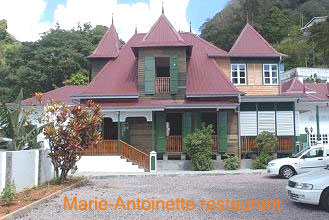

MARIE ANTOINETTE I PRESUME?
Sir, What a pity if Julien Durup has succeeded in undermining the historical connection between the Marie Antoinette Restaurant and “Livingstone Cottage”, the house where the explorer H.M. Stanley stayed in 1872 (Le Nouveau Seychelles Weekly, 24 November). I may have been partly responsible for spreading this legend as in the Air Seychelles in-flight magazine Silhouette of 2001, while writing about the late Mrs Kathleen Fonseka and her famous restaurant, I noted: “It is said that the American adventurer and journalist H.M. Stanley and his party stayed here while they waited for the French mail steamer to take them back to Europe. 
Mr Durup may well be right in asserting that “Livingstone Cottage” was in fact the old Valabhji house, near the police station. Indeed,
History is full of myths, and there is no reason why
I find it regrettable, however, that Mr Durup should see this as an opportunity to belittle the stature of a man like David Livingstone. A medical doctor and a Christian missionary, Livingstone is best known as an explorer who did much to map the African interior. Of course, as Mr Durup points out, he discovered nothing “new”; other people, the Africans, had always lived there. And Arab slavers were there before him. Livingstone’s achievement is having made the rest of the world not only aware of
I was interested to read in Mr Durup’s article about “the adventures” of Lieutenant Julien Emard Durup. Although the circumstances are hardly similar, it reminded me of one particular night in 1947 in
But that obviously was not Lt Durup’s intention. He certainly demonstrated the sentries’ lack of vigilance and he disarmed a sleeping officer who probably should have been awake. But afterwards he and his batman seem to have been guilty of theft and destruction of army property. Mr Durup informs us that the sentries were court-martialled. But what happened to the sleeping officer, who lost his pistol, and more importantly to Lieutenant Durup?
On 26 April 1944 a Lieutenant J.E. Durup was sentenced by field general court-marital to be cashiered from the Army (Seychelles Government Gazette, 24 June 1944). Could this be the same officer? But that, presumably, is another story.
* Livingstone’s son was named William Oswell Livingstone (although he was known as Oswell), and I am indebted to Mr Durup’s article for drawing my attention to an error I made when transcribing the name from Stanley’s Travels, Adventures and Discoveries in Central Africa. It is perhaps of interest to record that
William McAteer, PO Box 158, Victoria